Colquitz River Watershed

Watch: Vital Waters - a short film by Surf and Stone Studios featuring the restoration of urban streams.
Restoring Salmon Habitat in the Colquitz Watershed: A Community Effort
The Colquitz Watershed is one of the most ecologically important urban watersheds in Greater Victoria, supporting the region’s largest urban salmon run and providing critical habitat for a wide range of wildlife through diverse ecosystems, including freshwater streams, wetlands, and estuarine habitats. Flowing through the municipality of Saanich, the Colquitz faces ongoing challenges such as habitat loss, pollution, invasive species, and the impacts of climate change.
Despite increasing urbanization, the Colquitz remains critical for native fish populations, particularly coho salmon and coastal cutthroat trout. Coho salmon rely on the Colquitz River and its tributaries for spawning and juvenile rearing habitat, while coastal cutthroat trout, a species of concern, inhabit these waters year-round, requiring cold, clean water and complex habitat for survival.
Over the last decade, Peninsula Streams & Shorelines has partnered with the District of Saanich as well as many local community groups to address these issues through hands-on restoration, habitat enhancement projects, and community engagement throughout the watershed to improve habitat for salmon and other wildlife. Extensive instream and riparian habitat has been restored within the Colquitz River and its tributaries including Swan Creek, Goward Springs, Gabo Creek and several other smaller creeks.
In 2023, this long-standing collaboration was strengthened by a three-year grant from the BC Salmon Restoration and Innovation Fund (BC-SRIF), which enables us to expand our restoration efforts and implement a robust salmonid monitoring program. Thanks to this support and the dedication of our partners and volunteers, we have restored over 1,200 m of instream habitat and more than 2,500 m² of riparian habitat in the Colquitz Watershed to date, resulting in a fairly strong coho run despite the highly impacted nature of the watershed. With the effects of climate change being increasingly felt within our region, we are facing more and more challenges every year, particularly around increasing drought conditions causing low flow during the fall spawning season as well as increased winter flooding conditions.
There is a need to design restoration activities to safeguard these vulnerable salmonid populations through these changing seasonal conditions, as well as undergo comprehensive monitoring of the coho and cutthroat populations and the habitats they utilize.

The Colquitz Smolt Fence
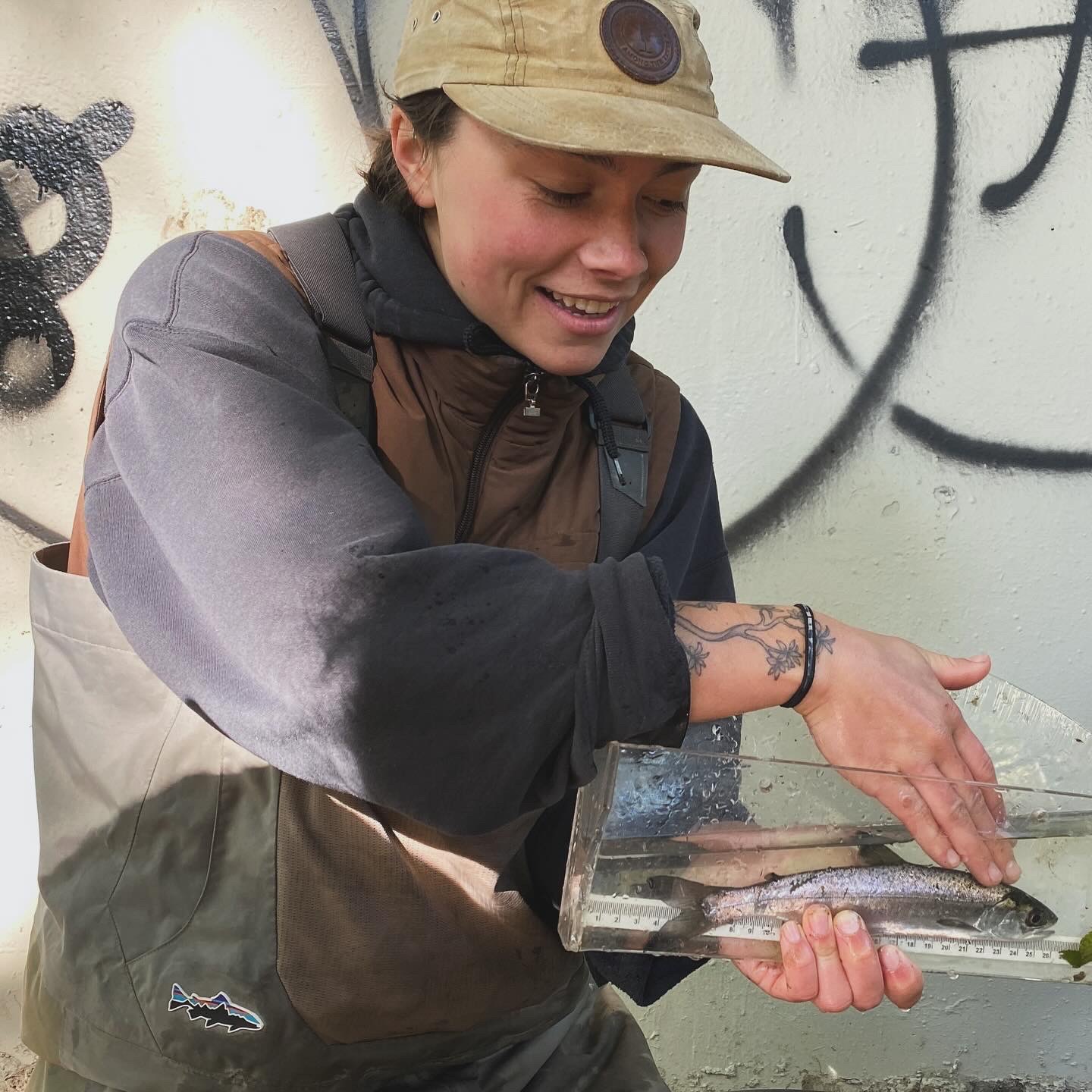
Smolt Monitoring
Smolt trapping is essential for monitoring juvenile salmonid populations, providing critical data on migration timing, survival rates, and habitat use, which helps assess the effectiveness of restoration efforts and guide future conservation actions. Ongoing efforts to monitor and restore salmonid habitat have been crucial in preserving vital populations of coho salmon and coastal cutthroat trout.
For years, community stewards with Salmon in the City have counted spawning adult salmon and trout at the Tillicum Fish Counting Fence. However, juvenile salmon smolt counts have not been conducted since the early 1980s, leaving a critical gap in understanding their total life history and migration patterns.
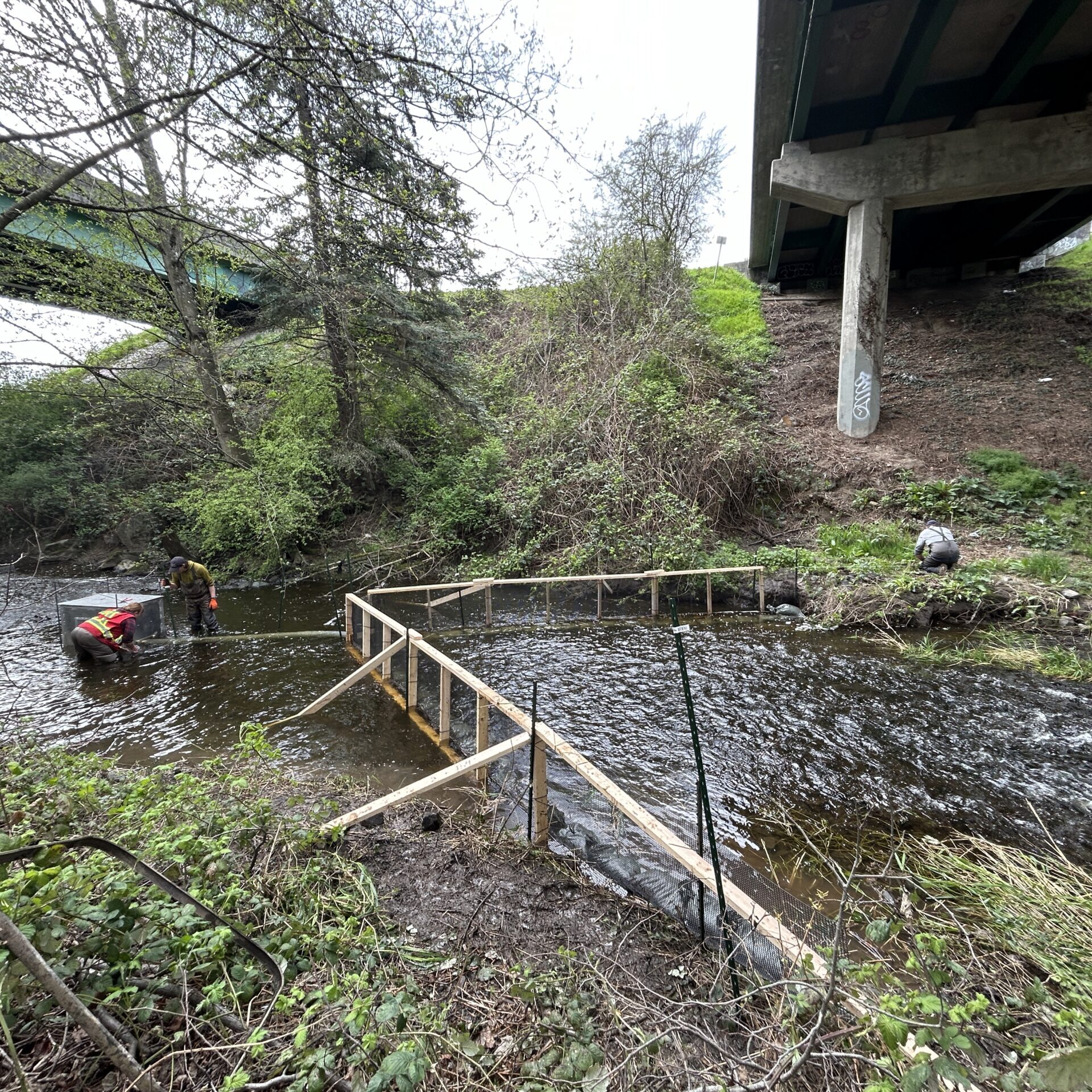
The Smolt Fence
Peninsula Streams & Shorelines and its community partners installed a smolt fence on the Colquitz River in March 2024. This temporary structure captures out-migrating salmonid smolts, providing essential data on population health and migration trends. The initiative also integrates Passive Integrated Transponder (PIT) technology, allowing researchers to track tagged fish throughout their life cycle.
The smolt fence consists of wood and mesh panelling that spans the width of the river, reinforced with pond lining, rebar, and sandbags. At the apex of the fence lies a large tube leading to a metal box, which captures and holds fish migrating down the river.

How It Works
From March to June, the box is checked daily by staff and volunteers. Captured fish are counted, measured, and assessed for overall health, before being released downstream. Careful maintenance of the fence is necessary to ensure no gaps that could lead to fish escape, as well as strong structural integrity during heavy rain events.
Local volunteers play a crucial role in operating the smolt fence, receiving training on fish handling, safety procedures, and data collection.
In 2024, we had a highly successful year where we counted just over 4,000 coho smolts and 220 coastal cutthroat trout! For more information, please get in contact with us.
Gabo Creek Restoration
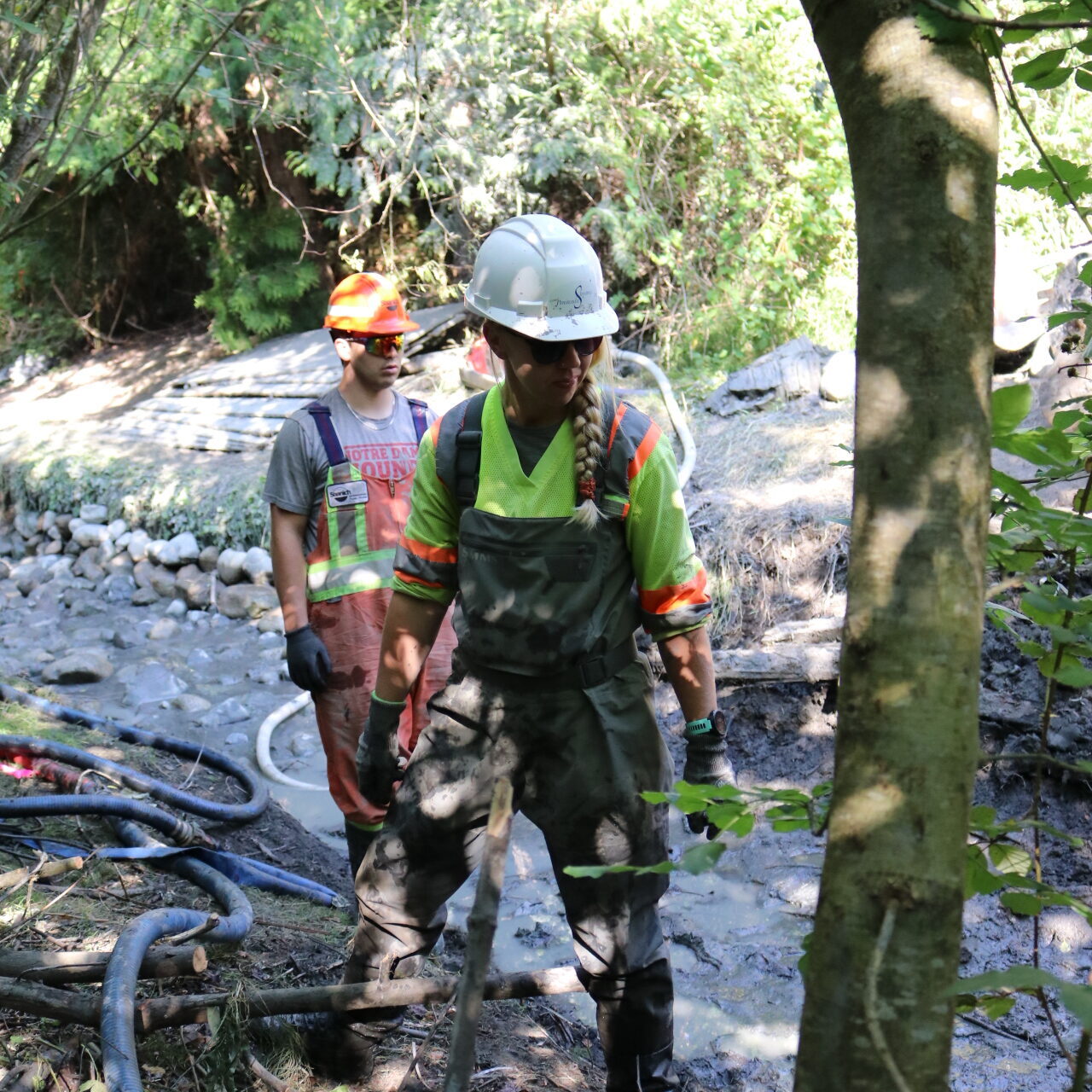
Why Gabo Creek?
In 2024, we partnered with the District of Saanich to complete a major restoration project on Gabo Creek, a vital tributary of the Colquitz River that provides essential overwintering and rearing habitat for salmonids. Flowing from Rithet’s Bog, under Highway 17, and into the Colquitz mainstem at Copley East Park, Gabo Creek is heavily impacted by urbanization. Excess fine sediment, pollution, and a lack of habitat complexity have degraded the waterway, reducing its ability to sustain fish populations.
Our restoration efforts focused on removing fine sediments and enhancing both instream and riparian habitats to support the long-term health of this important creek.
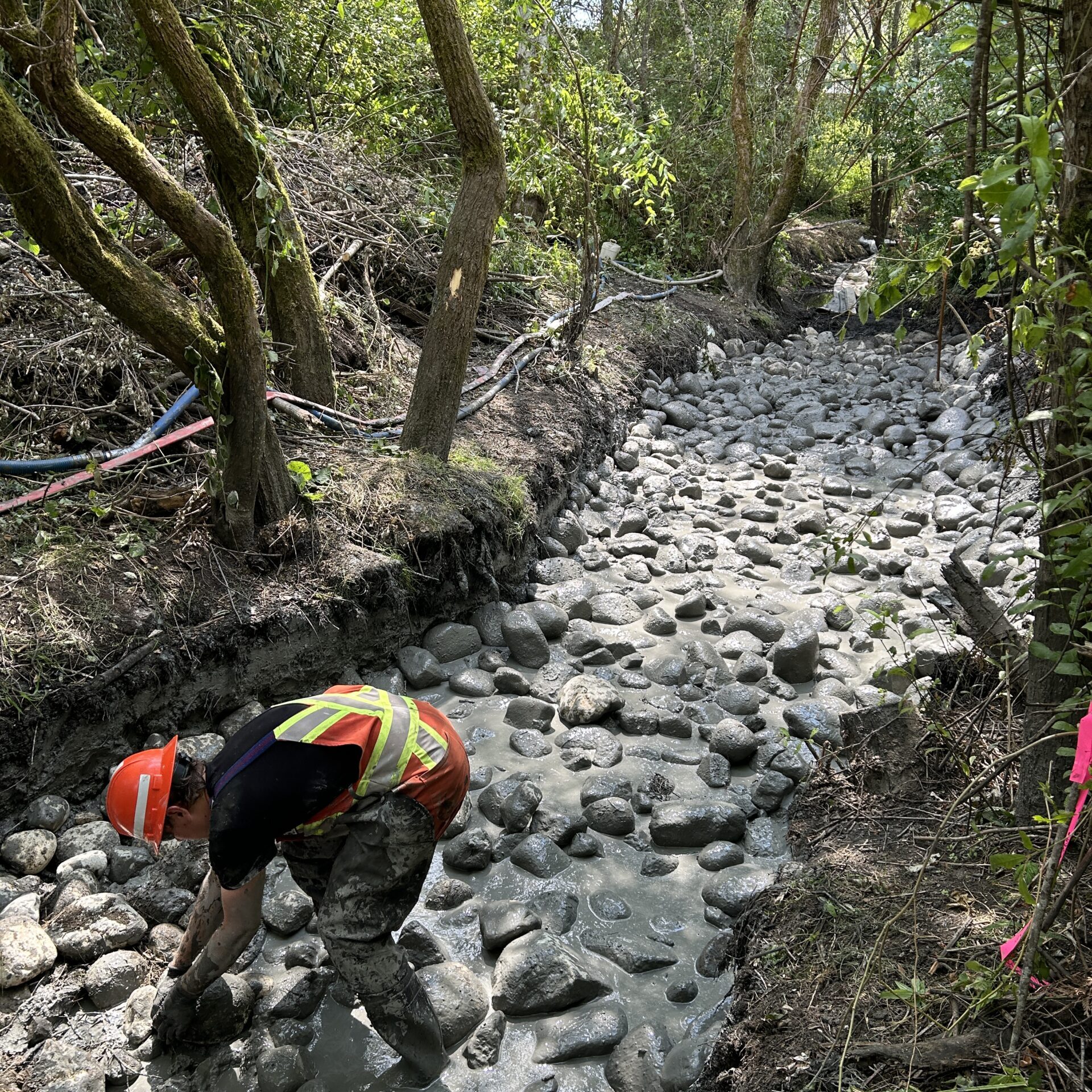
Improving ecosystem function
Instream work involved removing fine sediment, constructing riffles, deepening pools, and adding large wood and boulders to improve fish habitat and resilience. An excavator and labour crew completed the work, with careful fish salvage and water management to protect aquatic life.
Riparian restoration included removing invasive species, adding nutrient-rich mulch, and replanting with native vegetation. Volunteers along with PSS and Saanich Parks staff led the effort to replant the riparian areas. Ongoing watering and maintenance for five years will support long-term success.
In total, we restored over 200 m of critical overwintering and rearing salmon habitat.

what's next?
We will continue instream and riparian restoration in Gabo Creek as well as continue our work in the mainstem of the Colquitz River to create continuous, high-quality habitat.
In addition to restoration work, we will continue to monitor water quality and fish populations to assess habitat improvements and ensure long-term ecosystem health. These efforts will help support fish populations and enhance overall watershed resilience.
Copley East Park Restoration
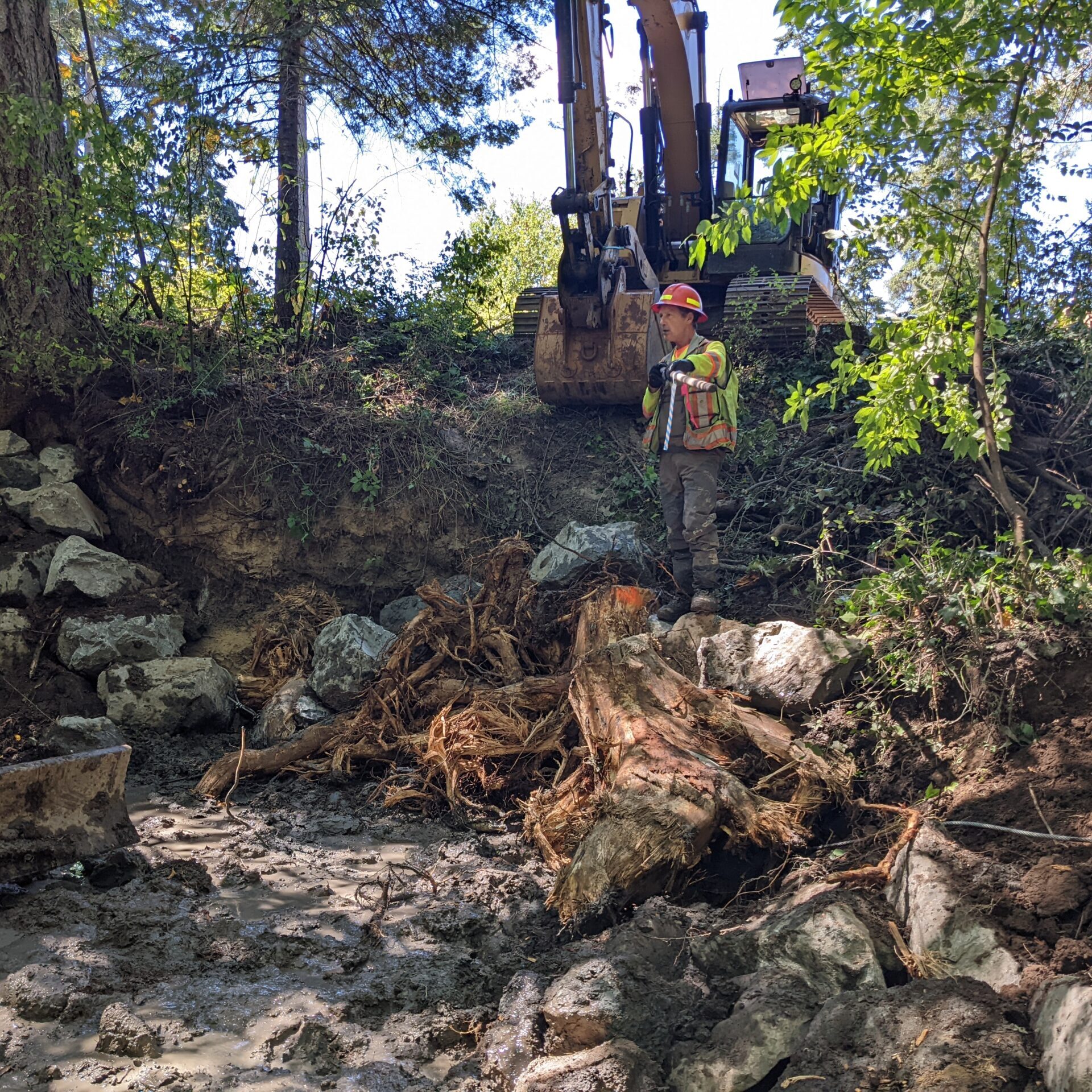
The History/Problem
The Colquitz River, which flows through Copley East Park, is part of a highly urbanized watershed that has experienced decades of ecological degradation due to land development, stormwater runoff, and channelization. Historically, much of the river’s natural meanders and riparian vegetation were lost, leading to reduced habitat quality for native fish like coho salmon and coastal cutthroat trout.
Within Copley Park, the stream was once heavily incised, lacking in gravel and large woody debris and unable to support successful spawning. Invasive plant species, erosion, and encroachment from surrounding urban infrastructure further compromised the ecological integrity of the site. These issues highlighted the need for targeted restoration to rehabilitate habitat, stabilize stream banks, and improve the overall health of the Colquitz River.
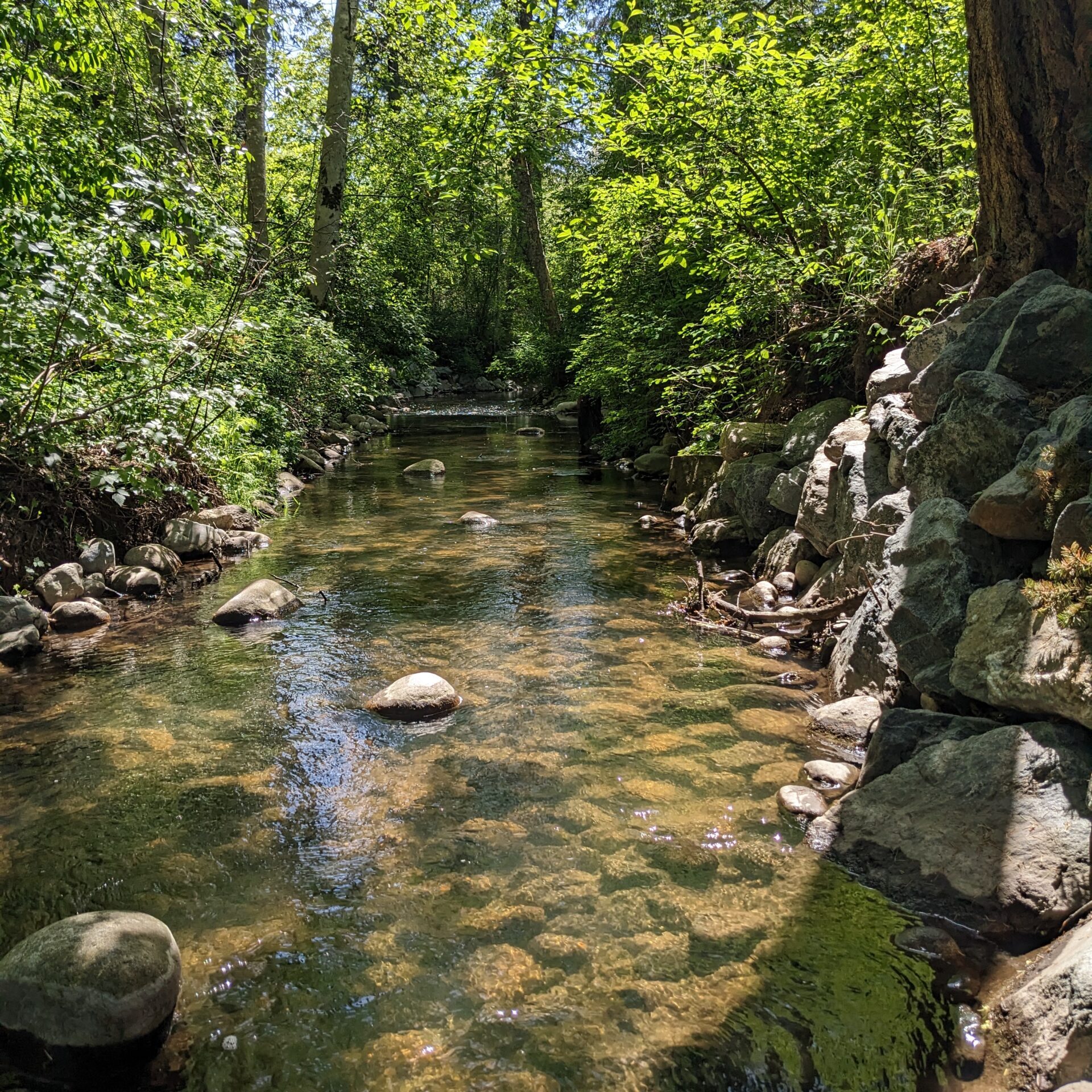
Restoration in Copley Park
Since 2019, PSS has partnered with the District of Saanich to restore sections of the Colquitz River within Copley East Park—over 100 m of stream length restored in each of 2019, 2020, and 2022. The work has focused on improving spawning and rearing habitat for coho salmon and coastal cutthroat trout by installing boulder clusters, Newbury weirs, spawning gravel beds, and large woody debris.
Multiple viewing platforms and protective fencing have been installed to support public engagement and safeguard riparian areas, which have been extensively replanted with native vegetation. Since restoration, coho salmon have been observed actively spawning in newly restored sections—areas that were previously unusable due to a lack of suitable gravel.
Scroll through or click to view this story map created by UVic Community Mapping in 2023 showcasing restoration within the Colquitz River in Copley Park.
Swan Creek Restoration
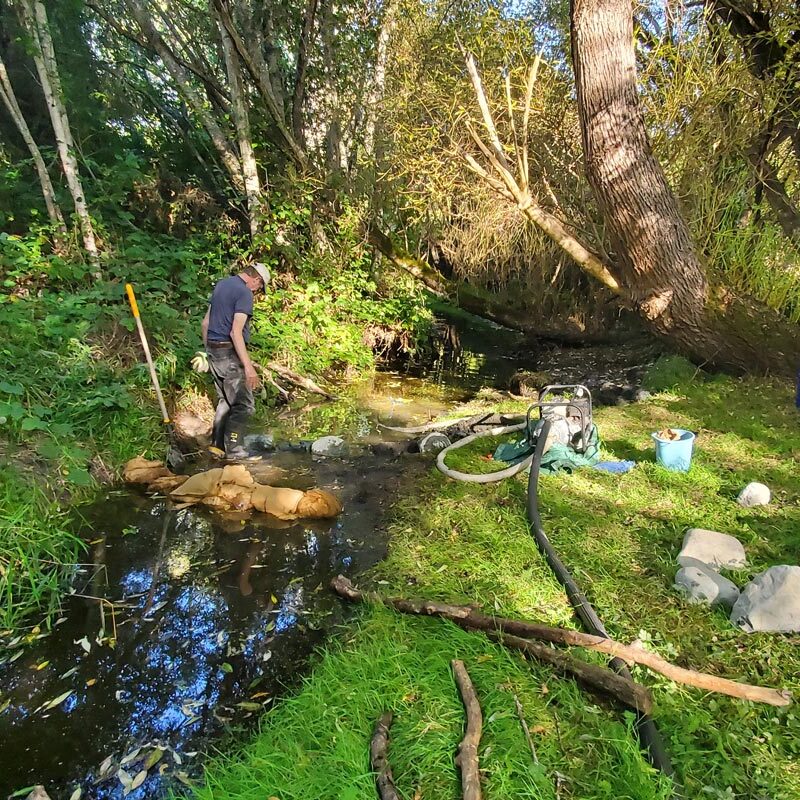
A Vital Tributary
Swan Creek is an important salmon-bearing urban stream and a tributary of the Colquitz River.
Over the past 150 years, the area surrounding Swan Creek has been logged, farmed, and ditched in many areas, drastically changing the area from a natural wetland to agricultural land, and now into a suburban neighbourhood.
These transitions have caused significant degradation of the creek. The creek bottom was excavated to facilitate drainage and impervious surfaces, such as roads, roofs, and driveways, producing stormwater surges, high flows, pollutant and nutrient inputs, as well as a modified stream channel.
Despite many challenges caused by urbanization, the creek is once again fish-bearing thanks to the work of dedicated stewardship groups.
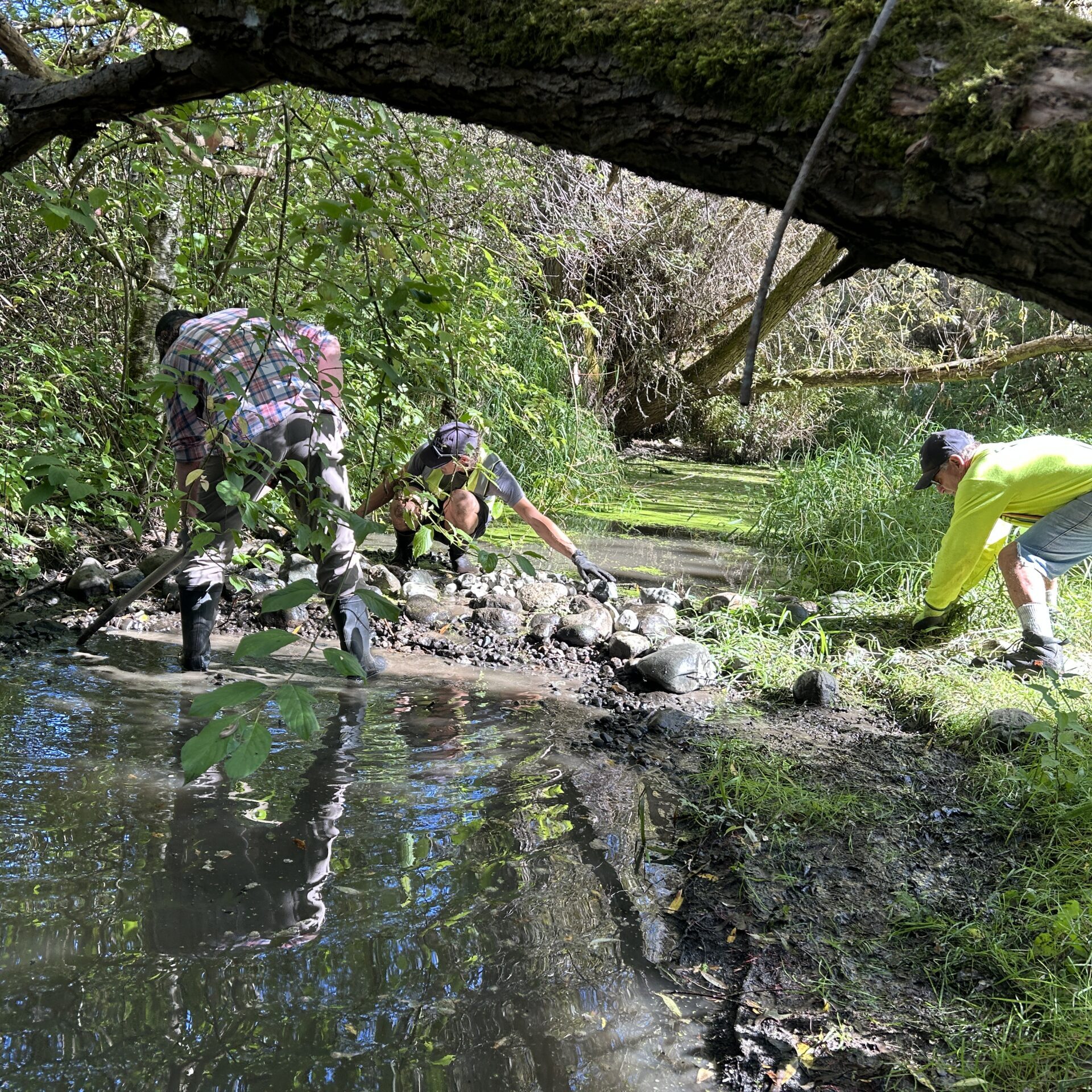
Improving Habitat
In 2012, PSS helped establish the Friends of Swan Creek Watershed by providing access to funding and technical support to bring their vision for stream restoration and salmon enhancement to life. At the time, Swan Creek lacked essential habitat features like rock and gravel. In partnership with the Friends of Swan Creek Watershed and the District of Saanich, we began rebuilding the creek with the installation of 20+ rock riffles, boulder runs, and spawning gravel sites. These structures oxygenate the water year-round, help cool it during the summer, create resting pools, and retain spawning gravel.
The impact was immediate—within two months, adult coho salmon were observed spawning on the newly created platforms. To enhance the riparian zone, volunteers have planted native vegetation to stabilize stream banks and increase canopy cover, creating healthier conditions for fish. We continue to support ongoing restoration efforts and public education to protect and improve Swan Creek.

Engaging Students
Robert “Bob” Cox, a retired provincial fisheries biologist, was a driving force in establishing the Friends of Swan Creek Watershed. Sadly, Bob passed away in 2015. To recognize his dedication to Swan Creek, we renamed a footbridge the Bob Cox Bridge and commissioned a plaque honouring Bob’s dedication to Swan Creek.
In 2017, we initiated a bridge signage project with Gr. 5 students from McKenzie Elementary School. Overseen by local artist Carolyn Knight, students created artwork and poetry about the creek, salmon, and other wildlife. The District of Saanich then designed and installed two beautiful signs that now grace the Bob Cox Bridge, behind the Marigold Road CRD pump station.
Today, we continue Bob’s legacy by working with school groups and community volunteers to restore Swan Creek through invasive species removal, instream restoration events, and water quality monitoring—fostering stewardship and connection to this important urban waterway.
The Colquitz Coalition
The Colquitz Coalition is a collaborative network of community groups, local governments, and environmental organizations dedicated to protecting and restoring the Colquitz Watershed. United by a shared commitment to watershed health, the Coalition supports efforts such as habitat restoration, water quality monitoring, public education, and environmental advocacy. PSS hosts an annual Colquitz Coalition meeting, providing a valuable opportunity for all member groups to come together, share updates on their projects, exchange knowledge, and strengthen collaboration. Through this collective approach, the Coalition works to enhance the ecological integrity and resilience of the Colquitz Watershed for current and future generations.
